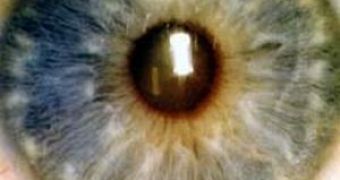The examination of the eye can trace and reveal diseases that affect other parts of the body. For example, a retinal exam can reveal high cholesterol, diabetes, parasitic infections, high levels of intra-cranial pressure etc. The cornea can lead to the tracking of excess amounts of minerals (iron, copper) in body organs that may cause further conditions. Pupillary exam can reveal drug intoxication, neurological diseases, diabetes etc.
Iridology is a science that implies means of diagnosing actual medical conditions or future disorders that may appear in an individual's organism through the pigmentation of the iris or abnormalities in the eye pigmentation. Iridologists consider that patterns of the iris correspond to all inner organs and bodily functions. The iris is connected through nerves to the organs in our body and that is why there is a map of the iris divided in 60 sections.
If when examining the eye the iridologists suspect that there are certain disorders in the body connected to some abnormalities in the iris pigmentation, they advice the patient to see an appropriate specialist in the field.
Therefore, iridology cannot be seen as an ophthalmologic field, because ophthalmologists detect visual and eye problems by analyzing the whole eye, not only the iris. Furthermore, ophthalmologists usually treat themselves a problem when it occurs in a patient, not directing the patient to other doctors.
Sclerology is another "eye science" that deals only with the shape and condition of blood vessels present on the sclera (the white portion) of the eyeball.
An iris analysis can show the general constitution and health condition of someone depending upon the density of the iris fibers. The patterns, structure, colors and degrees of lightness and darkness in the iris predict if a certain area of the body is healthy or weak. It can also reveal the relative site in the body where irritation, injury or degeneration of the tissues and organs occurs or is going to occur. During and iridologic examination toxic levels accumulated in the body or a certain organ can be tracked down, as well as nutritional and chemical imbalances.
Even if it provides information about the body tissues which indicate tendencies towards conditions or diseases in the body, often before symptoms appear, iridology cannot name a specific disease. Also, this diagnosing method cannot locate parasites, gallstones, or germs in the body, but will indicate the presence of inflammations and intoxicated areas in the organism.
The method used by iridologists to trace imbalances and disorders in the body is based on the iris charts developed by doctors Von Peczely and Bernard Jensen, the most famous iridologists that have extensively contributed to the development of this science. The nowadays iridologists take photos and make charts of an individual's eye and then interpret the abnormalities in that person's iris and what they stand for - possible diseases or other health problems.
Even if many people confide in this science and appeal to it whenever they do not feel well or simply for finding out what possible disorders may occur in their bodies, iridology is not a scientifically based technique like ophthalmology, for example. It is only a complementary method of diagnosing possible illnesses and that is why a patient should consult also a doctor before starting to treat various diseases.

 14 DAY TRIAL //
14 DAY TRIAL //